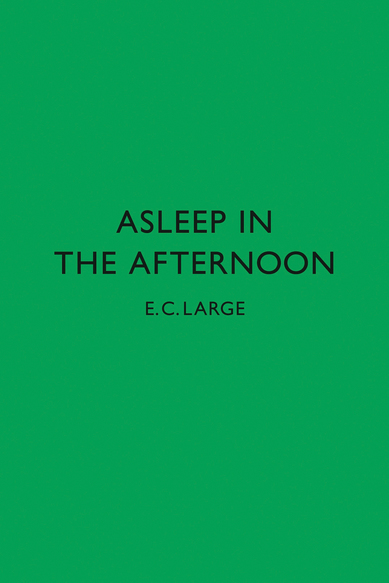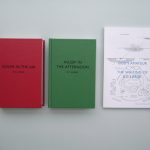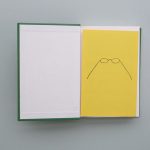This is the novel first published in 1938 in London. We are publishing facsimile editions of this book and its precursor, Sugar in the air. A third book, God’s amateur: the writing of E.C. Large is being published alongside the two novels, as a companion.
Synopsis
Asleep in the afternoon is the novel that the ‘hero’ (ironically conceived) of Sugar in the air then writes. The book has quite a complex structure: a novel about a device that can bring on sleep, the woman who becomes a missionary advocate for this sleep as a social palliative; and the story, told in parallel, of the writer and his wife and young family, living through the making and production of this novel.
Reviews
Sometimes the best stuff has been out there all along, waiting to be rediscovered and saved from obscurity. When Stuart Bailey (‘Dot Dot Dot’; Dexter Sinister) and Robin Kinross of Hyphen Press, both of whom usually focus on design and typography, decided to release facsimile editions of E.C. Large’s novels ‘Sugar in the air’ (originally published in 1937) and ‘Asleep in the afternoon’ (1938), they rescued a long-forgotten literary treasure whose ‘peculiar charm’ is indeed ‘difficult to pinpoint’, as Stuart Bailey states. It could be the understated precision of Large’s prose, his rather plain style, the modesty about it. It could be the intricate connection between the two novels, the latter being a metasequel to ‘Sugar in the air’ that ‘continues, duplicates, and mirrors it all at once’, as Bailey writes in his essay ‘Science, fiction’ (which is included in ’God’s amateur’, a companion to the works of Large, also released by Hyphen Press). It could also be the fact that these ‘scientific romances’ are not the kind of writing you’d expect from books published in the otherwise rather low-modernist (read: boring, unimaginative) 1930s, or how that strangely unassuming level of convolution doesn’t come off as mere playfulness. It could also be the protagonist himself, a man called Pry, who is – like Large, who was, successively, an industrial chemist, a writer, and a plant scientist ‘driven (not to say condemned) by a compulsion to identify local defects – “What exactly is going on here?” ’ While it’s probably all of the above, we have to say that E.C. Large certainly knew how to create a proper page-turner. You simply HAVE to read on. You want to know more about Pry’s fate, his respective projects’ fate, whether it is extracting sugar from the air or writing one of these novels (which, apart from sugar and novels, actually deal with a lot of things: the mass-market, design issues, love, sleep, bureaucratic absurdities) as if the paper was in fact sugar-coated.
RNK, Lowdown [Berlin], no. 74, December 2010 – January/February 2011



